
Mark Glaister compares many of the current quickdraws on the market, giving information on different types of quickdraws and their usage including the Alpha Sport from DMM, the Helium from Wildcountry, the Black Diamond Hoodwire, the Petzl Ange, the Mammut Bionic, the Grivel Gamma and CAMP Nano plus a few others.
Walk into any good climbing shop and it's likely the wall behind the counter will be decked out in a vast array of colourful and shiny climbing hardware – dominated by a dangling mass of karabiners and quickdraws. Sifting through the manufacturers' claims and safety statistics is – I would guess – for the majority an onerous task at best. As I have found out in the last few years though, perseverance can bring great rewards, not least in helping to radically redesign my rack both for sport and traditional climbing.
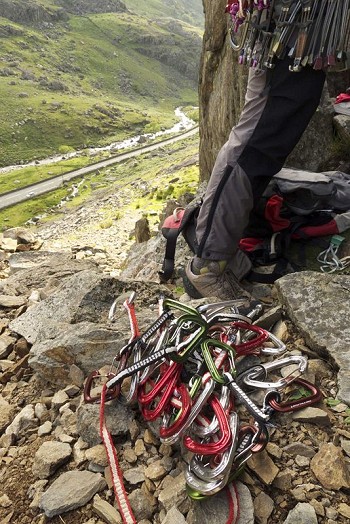
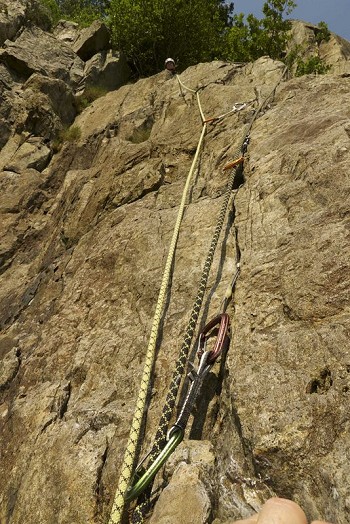
With both traditional and sport climbing use in mind, Mark Glaister has been testing out some of the diverse range of quickdraws currently available in UK shops. These span from the almost Lilliputian size super-lightweight Metolious Mini wire-gate to the more conventionally styled and chunkier Petzl Spirit Express.
Central to the overhaul of my trad rack was the desire to shed weight from what had become a bloated and outdated selection of kit – without compromising either the safety or handling of the equipment. Key to the shedding of much of the weight was the upgrade of quickdraws. I chose some of the lightest available on the market and the immediate benefits were easily felt as, on more than one occasion, I had to count out my normal load of 14 draws as it just didn't feel like there were enough on the rack!
As an illustration, my old set of 14 quickdraws weighed in at 1.68kg, while the new set of 14 comes in at 0.908kg - almost half the weight! So you see that, with consideration and some outlay of cash, it is easy to shave off a couple of pounds without dieting!
Should further persuasion be needed amongst the older generation then for those that remember the old 5 for a pound Cassin Bonaiti deals that the long departed Pindisports used to advertise back in the day, then a rack of these would weigh-in at a waist belt tugging 2kg.
With both traditional and sport climbing use in mind, I have been trying out some of the diverse range of quickdraws available in UK shops, spanning from almost Lilliputian size super-lightweight quickdraws such as the Camp Nano 23, Petzl Ange S, the Metolious Mini Wire-gate and the Wild Country Astro all are light in the extreme but small in the hand.
Which quickdraws for which uses?
Although it is quite possible to use all quickdraws across the climbing spectrum of sport to traditional climbing and mountaineering - the safety specification of all being tested to way beyond what could realistically be replicated under normal conditions – some are designed to perform best when used in certain situations.
A number of considerations are worth pondering when deciding what to buy. The most common is the overall size of the quickdraw components - both the karabiner size and the length of the tape extender joining the two karabiners (the extender is called various names such as the Express or Bone). When looking at the size of the karabiner itself then size has two implications – ease of handling and weight. With regard to weight, at the super-lightweight end of the list are setups such as the Camp Nano 23, Petzl Ange S, the Metolious Mini Wire-gate and the Wild Country Astro all are light in the extreme but small in the hand.

Opinions of other climbers out and about on the crags:
I passed a number of these styles around to climbers for use out and about on the crags and it was pretty much a split decision of opinion - some with large hands or lesser dexterity finding that the handling and clipping was hindered by the small size of the krab, while others were wowed by the lack of weight. I found the super-lightweight karabiners quite easy to handle – both when clipping and unclipping – however in an alpine setting they were far more awkward to use as the clipping of twin ropes was clumsy in the narrow gate and the dulling of finger dexterity in gloves seriously hindered handling.
An unexpected string to the super-lightweight karabiner's bow was adding a dozen or so to a sport rack should the pitch be unusually long. I talked to a few climbers who now use this ploy when onsighting ultra long lines where upwards of 12 draws maybe needed and a rack of full weight 'sport draws' such as the Petzl Spirit Express or DMM Alpha Sport Draw would be very heavy indeed.
At what I would call the more substantial or larger end of the karabiner/quickdraw market are those such as the DMM Alpha Sport Draw, Mammut Bionic Evo Express, Black Diamond Hoodwire Quickdraw, Petzl Spirit Express and the Wild County Nitro and Helium. The big karabiners on these models offer a wide gate opening and sit easily in even the most shovel-like of hands. Big karabiners are much easier to clip into gear or clip ropes into with or without gloves on, and are the most reliable for bolt clipping when speed is essential both when unclipping from the harness, swiping at the bolt, and flicking the rope in. As a compromise the Grivel Gamma Quickdraw, offers a mid-weight option and slightly smaller sized karabiners than those of a similar weight. The smaller karabiners although lacking the design sophistication of a number of the other wire-gate karabiners rack up neatly and cut back on the bulk hanging around the waist and also would be a better option for those who struggle with the very small karabiners on the likes of the Camp Nano 23 Express.
What length and style of extender?
The extenders that connect the two karabiners of a quickdraw together can be made of either nylon webbing or dyneema and come in various thicknesses and lengths. For trad climbing and mountaineering the thinner and lighter dyneema such as that on the Grivel Gamma QD, Wild Country Nitro or Black Diamond Hoodwire is probably the style that most will opt for, whilst for sport climbing the thicker nylon webbing of, for example the Petzl Spirit Express or DMM Alpha Sport Draw, is preferable - being hard wearing and much easier to grab and pull on. As important is the length of the extender; these come in various lengths from c.10cm to c.30cm. It is very much a matter of personal choice but a good selection of lengths for trad climbing is essential. Most choose shorter extenders for sport quickdraws as lines tend to be straighter and the need to extend is less as gear won't lift out.
Extenders are either open - a continuous loop (only the Camp Nano quickdraw had an open extender in those featured here) or the loop is closed with stitching. The closed draws have the rope-clipping end of the extender tightly fixed to the karabiner with a 'string' or 'tadpole'. The string/tadpole is a rubber attachment and is a small but crucial bit of kit that not only holds the karabiner in the correct position but aids clipping the rope in. Totally open extenders are far less easy to manage but will lessen the possibility of the quickdraw lifting out nuts.
| Product | Wiregate | Solidgate | Dyneema, Spectra or Dynex | Nylon | Weight | Karabiner Size | General ease of handling | Ease of clipping | Handling with gloves on | Coloured Karabiners | Shrouded or key lock closure |
| Petzl Spirit Express | No | Yes | No | Yes | 104g (11cm extender) | Large | Very Good | Very Good | Ok | Yes | Key lock |
| Petzl Ange (small) | Yes (single) | No | Yes | No | 63g (10cm extender) | Small (also a larger version not reviewed) | Ok/fiddly | Ok Difficult with thicker or twin lines | Poor | Yes | Key lock (single wire gate) |
| Mammut Bionic Evo Express | Yes on rope karabiner | Yes on gear karabiner | Yes | No | 82g (10cm extender) | Large | Good | Good | Ok | Yes (gate) | Key lock and Not Shrouded |
| Black Diamond Hoodwire Quickdraw | Yes | No | Yes | No | 80g (12cm extender) | Large | Good | Good | OK | Yes | Shrouded on gear karabiner |
| Metolious Mini Quickdraw | Yes | No | Yes | No | 56g (10cm extender) | Small | Ok/Fiddly | Ok Difficult with thicker or twin lines | Poor | Yes | Not shrouded |
| Wild Country Nitro QD | Yes | No | Yes | No | 77g (10cm extender) | Large | Good | Good | OK | Yes (slight metallic difference) | Not shrouded |
| Wild Country Helium QD | Yes | No | Yes | No | 73g (10cm extender) | Large | Very Good | Very Good | Good | Yes | Shrouded on both karabiners |
| Wild Country Astro QD | Yes | No | Yes | No | 65g (10cm extender) | Small | Ok | Difficult with thicker or twin lines | Poor | Yes | Not Shrouded |
| DMM Alpha Sport Draw | No | Yes | No | Yes | 104g (12cm extender) | Large | Very Good | Excellent | Ok | Yes | Key lock |
| Grivel Gamma Quickdraw | Yes | No | Yes | No | 76g (11cm extender) | Medium | OK/Good | Good | OK | Yes | Not Shrouded |
| Camp Nano 23 Express | Yes | No | Yes | No | 53g (10cm extender) | Small | Ok/Fiddly | Ok Difficult with twin or thick ropes | Poor | Yes | Not shrouded |
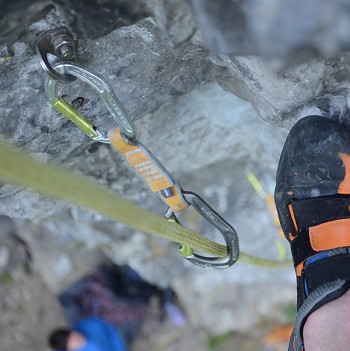
Wire or solid gate karabiners?
Quickdraw karabiners come in many shapes and sizes but most are now offset D shaped with either wire or solid gates and feature either a bent or straight gate. Bent gates aid the clipping of the rope into the quickdraw. A number of manufacturers have been developing variations on this shape the DMM Alpha Sport Draw having a kinked spine allowing a greater gate opening, whilst the Mammut Evo Bionic has an inward curved spine that seems to improve general handling.
Wire-gate karabiners are obviously lighter than ones with a solid gate and are less prone to freezing up in cold conditions, but they offer another advantage: less gate flutter. If you bang a solid gate karabiner in the palm of your hand the gate moves open; this happens less with a wire-gate. In a fall situtation, the gate opens and closes rapidly as the rope runs through it, rendering the gate open at times and as a consequence weakening the karabiner – see this BMC article.
A downside to some wire-gate karabiners is that the gate protrudes from the main body of the karabiner, so the gate may be opened by rubbing against the rock (such as the Metolious Mini Wire-gate and the Camp Nano 23). This problem has been reduced by using a hood or shroud i.e. on the Black Diamond Hoodwire Quickdraw and the Wild Country Helium. The use of a hood on wire-gates is however primarily there to stop the hook that captures the wire-gate snagging on wires and bolts, potentially loading the karabiner away from the spine, its strongest axis.
Solid-gate karabiners are relatively heavier than wire-gates but often the gate closure is not hooked - for an example see the solid-gate Mammut Bionic Evo Express. This reduces the possibility of snagging. On solid-gate karabiners the bent gate is often more pronounced and rope clipping is found by some to be easier. The same goes for the solid straight gate where there is often a little more to get a thumb on when opening the gate. Solid-gate karabiners are less prone to the gate opening by rubbing against the rock than the wire-gates without a hood/shroud nose feature.
Other features:
Most karabiners are hot-forged, this has resulted in some karabiners now having an I-beam construction, the hot-forging allowing metal to be placed where it is needed for both strength and handling whilst keeping the overall weight of the karabiner to a minimum. A slightly pronounced rope groove in the rope-end karabiner helps to keep the rope running in its correct place and avoid any loading away from the spine of the karabiner. Other developments that are worth keeping an eye-out for are the single wire gate and the tiny tier-drop that helps keep the rubber string in place both as used on the Petzl Ange. On the DMM Alpha Sport Draw a pronounced indentation in the bent gate aids clipping the rope as does a serrated spine on both the bolt and rope end karabiner.
| Product | String performance | Extender open or closed | Good for trad | Good for sport | Bent gate on rope karabiner | Good with Beta clip stick | Extender length range | Price |
| Petzl Spirit Express | Very Good | Closed | No (Heavy) | Yes | Yes | Yes | Choice | £20.00 |
| Petzl Ange (small) | Very Good | Closed | Yes (Light) | No | No | No | Choice | £21.00 |
| Mammut Bionic Evo Express | Good | Closed | Yes | Yes | No | Yes | None | £20.00 |
| Black Diamond Hoodwire Quickdraw | Good | Closed | Yes | Yes | No | Difficult insecurely held gate | None | £15.99 |
| Metolious Mini Quickdraw | Poor | Closed | Yes (Light) | No | No | No (just about if pushed) | Choice | £18.00 |
| Wild Country Nitro QD | Good | Closed | Yes | Yes | No | Yes | Choice | £15.50 |
| Wild Country Helium QD | Good | Closed | Yes | Yes | No | No | Choice | £18.00 |
| Wild Country Astro QD | Good | Closed | Yes (Light) | No | No | No | Choice | £15.50 |
| DMM Alpha Sport Draw | Very Good | Closed | No (Heavy) | Yes | Yes | Yes | Choice | £18.50 |
| Grivel Gamma Quickdraw | Very Good | Closed | Yes | Ok | No | Yes | Choice | £14.50 |
| Camp Nano 23 Express | Poor | Open | Yes (Light) | No | No | No (just about if pushed) | Choice | £17.00 |
A few tips:
- Take care when racking big karabiners with small or different-shaped ones. Small karabiners can wrap themselves inside larger ones making selection and unclipping from the harness difficult.
- If the quickdraw's two karabiners are different colours it is easy to see which is the gear and rope end.
- Extra long quickdraws are easily made up with long open slings.
- Always use the same end of the quickdraw for clipping to avoid chips in the metal of the karabiner and potential for damaging ropes.
- Gates facing the same way or opposing? It is just a matter of personal preference.
Take great care if making up or using (as in the Camp Nano 23 quickdraw) open extenders with a rubber band to hold the rope karabiner in place – see this video for a shocking look at what can go wrong:
Some older UKC reviews of karabiners and quickdraws:
- Ange Review
- Nitro and Astro Review
- Older Review of Camp Nano and DMM Phantom
- Older Review of DMM Shadow and Phantom
About Mark Glaister
Mark is a climbing writer and photographer who has travelled to crags near and far for 35+ years. Mark started out climbing at school with friends on the sea cliffs and inland crags of Devon. At 18 he packed up his flares and Whillans harness, tied back his long black hair (where did it go!) and headed for the North, living between the Peak and Dales before moving on to the Lakes for work where he was based for around 20 years. During the 90's, Mark with his then partner Emma travelled extensively spending 1995 to 2000 in a van in the States, Canada, Europe, OZ and New Zealand. The last decade has been a transient one hopping between the Lakes, North Wales, Devon and Lancs, with trips away mainly on guidebook (Rockfax) work or for articles to places such as Sardinia, Finale, Ceuse, El Chorro, Lofoten, Mallorca and Turkey.



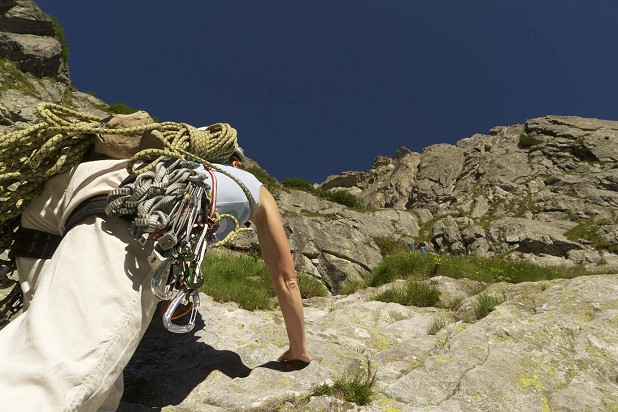
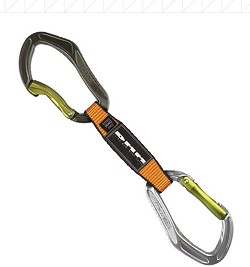

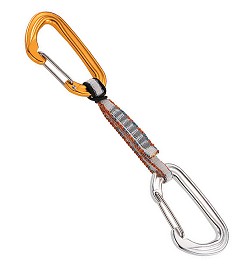
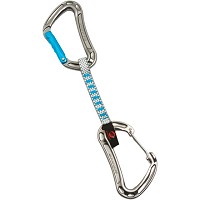
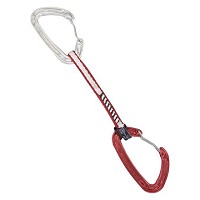
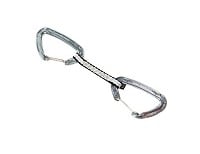

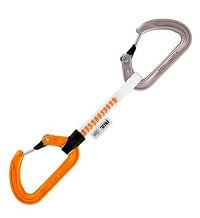
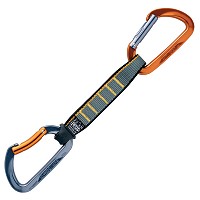
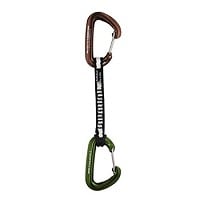
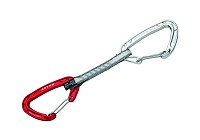
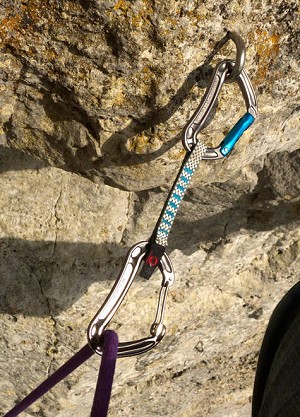
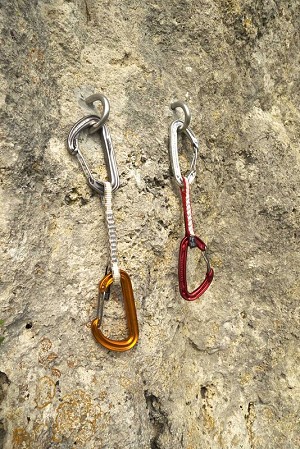
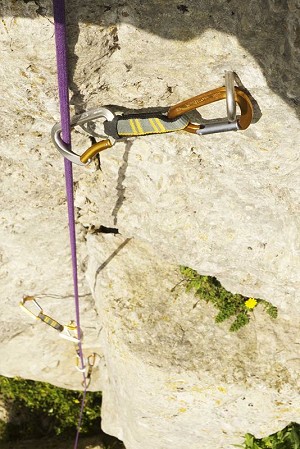
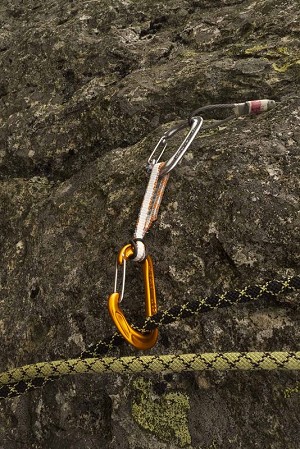
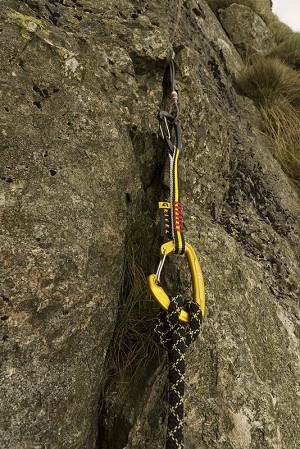
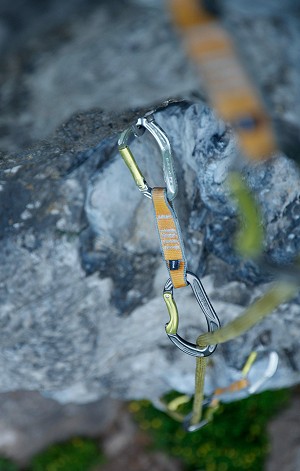
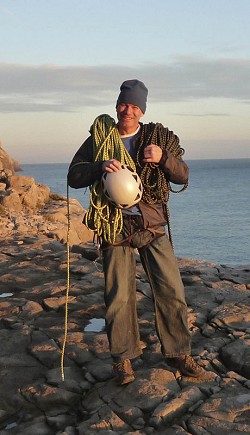
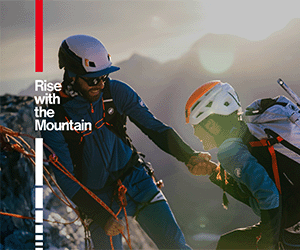
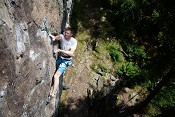
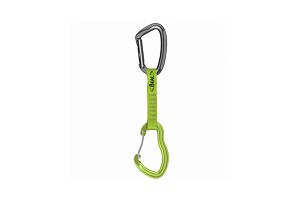



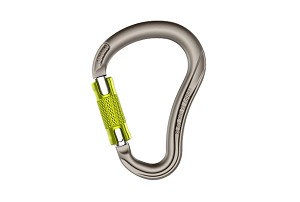
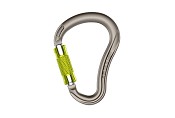
Comments